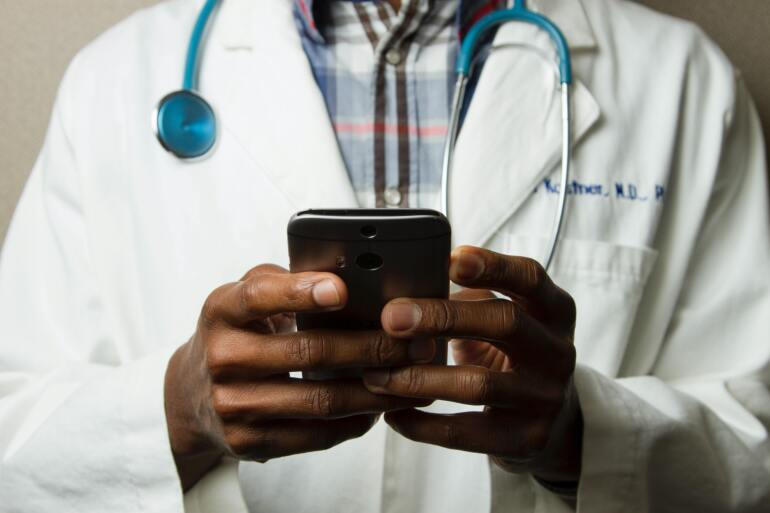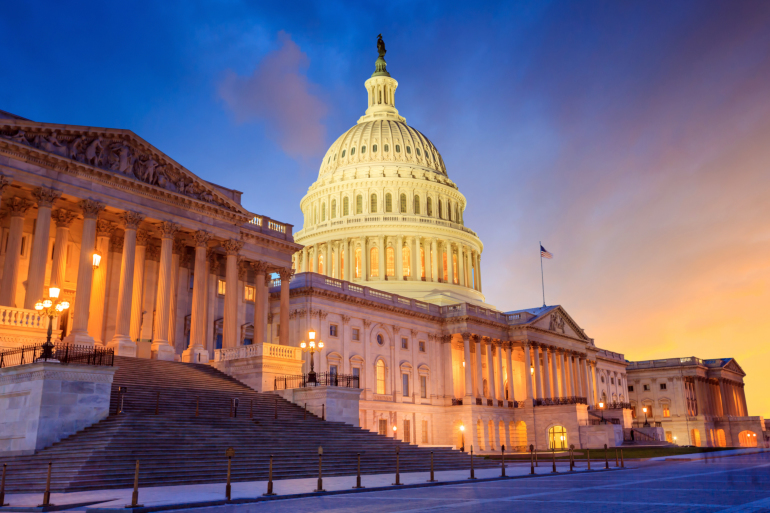Legal Update
Sep 8, 2020
Assisted Living Facilities Can Apply for CARES Provider Relief Funds ... But be Careful What You Ask For
Sign Up for our COVID-19 Mailing List.
Visit our Beyond COVID-19 Resource Center.
On September 1, 2020, the US Department of Health and Human Services (HHS), through the Health Resources and Services Administration (HRSA), announced that assisted living facilities (ALFs), are now eligible “providers” under the CARES Act Provider Relief Fund and can apply for funding under the Phase 2 General Distribution. While this announcement may open the door to some much needed relief for a sector hit hard by the COVID-19 pandemic, ALFs that do not typically receive government funding related to health care services will have to come up to speed quickly with the compliance obligations triggered by such funding.
Recognition of ALFs as Frontline COVID-19 Providers and Eligibility for Relief Funds
HHS lauded ALFs as frontline providers caring for a particularly vulnerable population. Citing Centers for Disease Control and Prevention (CDC) statistics, HHS noted that ALFs care for approximately 1 million residents in an estimated 28,000 facilities across the country. HHS also noted the efforts of these facilities to implement CDC infection control recommendations which have increased operating costs and expressly invited ALFs to apply for Provider Relief Funds “to help minimize the financial hardships of these increased expenses caused by COVID-19.”
HHS went on to confirm that like other providers ALFs may receive up to two percent (2%) of their annual revenue from “patient care.” The deadline to begin the application process is September 13, 2020.
To be eligible for Relief Fund payments, an ALF that does not bill Medicare or Medicaid must be licensed or certified by the state; have federal income tax returns for 2017, 2018 or 2019 or tax-exempt status; have provided patient care after January 31, 2020; and not have permanently ceased providing patient care.[1] HHS is maintaining a list of ALFs it has preliminarily determined to be eligible for funding. The list is based on information from state licensing boards, the American Health Care Association (AHCA), the National Center for Assisted Living (NCAL), Argentum, Brookdale, Leading Age, and other assisted living groups.[2] For ALFs not on HHS’s list, HHS will work with states and its partners to authenticate the ALF’s eligibility.[3]
Relief Fund Terms and Conditions and the False Claims Act.
As we have reported, Provider Relief Funds are subject to Terms and Conditions[4] which introduce the specter of False Claims Act (FCA) liability. These Terms and Conditions are material to HHS’s payment and are deemed accepted if the ALF does not return the payments within 90 days of receipt. As we have also reported, HHS’s Office of Inspector General (OIG) has increased enforcement efforts to ensure that COVID-19 relief funds are used appropriately. It is therefore essential for ALFs to understand the application of the FCA in light of the Terms and Conditions when applying for, receiving and using the relief funds.
An application to the Provider Relief Fund and receipt of payments would be within the ambit of the FCA. A party can be liable under the FCA for knowingly submitting, causing the submission of, or making a false statement material to, a false claim to the Federal government.[5] In addition, a party can be liable for a “reverse false claim” by knowingly making or using false records or statements material to an obligation to pay or transmit money to the Federal government, or for concealing or improperly avoiding or decreasing an obligation to pay or transmit money to the Federal government.[6] In this context, an “obligation” includes the retention of an overpayment.[7] Applying for or keeping more funds than the ALF knows it should have received, or using funds for an unapproved purpose, could trigger FCA liability.
The FCA’s “knowingly” standard includes deliberate ignorance or reckless disregard for the truth and does not require an intent to defraud.[8] It is also important to note that while the corporate form may provide protection for acts done on behalf of the organization, individuals, including directors and officers, can be personally liable for their own conduct in “causing” a false claim to be submitted.[9] FCA cases are often brought on behalf of the government by private citizens, known as qui tam relators, acting as whistleblowers.[10] These whistleblowers are usually current or former employees of the organization and are entitled to a share of the government’s recovery.[11]
If liable under the FCA, an ALF and/or its representatives can be required to pay the Federal government up to three times the amount of its actual damages which could include some or all of the Relief Fund money, plus penalties of $11,665 to $23,331 for each false claim, plus attorney’s fees for the whistleblower.[12] Large potential recoveries under the FCA have led to a proliferation of whistleblower suits.
For these reasons, understanding the Terms and Conditions in light of the FCA is critical. Given the exigencies of the public health emergency and the continuously evolving nature of the pandemic and its effects, neither the CARES Act nor other funding legislation[13] addressed ALF eligibility for these funds. Likewise, HHS guidance has been almost exclusively through FAQs which do not have the force and effect of law and are subject to change. As a result, ALFs considering relief funds must pay careful attention to evolving guidance with an understanding of the underlying purposes of the funding legislation and their organizations’ role in responding to the pandemic. There are numerous issues to be considered when assessing the Terms and Conditions, but two fundamental concepts relate to how much money a facility can receive and how the facility uses that money.
Compliance with Terms and Conditions – Funding Limits.
Phase 2 General Distribution payments are based on two percent (2%) of revenues from “patient care” from the applicant’s most recent federal income tax return for 2017, 2018 or 2019.[14] This methodology was prepared with Medicare and Medicaid providers in mind whose revenues are not directly translatable to ALFs.
Instead, many services provided by ALFs are residential and include independent living, but they also provide skilled services, therapy and medication management. In this regard, HHS defines “patient care” as “health care, services and supports, as provided in a medical setting, at home, or in the community to individuals who may currently have or be at risk for COVID-19, whereby HHS broadly views every patient as a possible case of COVID-19.”[15] ALFs will have to consider carefully what annual revenue can be attributed to patient care when applying for funds.
HHS’s current stance on patient care revenues for ALFs includes “revenue that supports residents’ nutritional, housing, activities of daily living, and medical needs, including purchased services.”[16] In addition, HHS has recently stated that resident fees for accommodations, and revenue from independent living units as a part of larger assisted or skilled nursing facilities, qualify as “patient care.”[17]
While this guidance is helpful, an ALF with monthly fees that cover multiple services should take care to isolate those elements of the monthly fee that it feels are clearly within the current guidance knowing that deliberate ignorance can be a basis for FCA liability.
Compliance with Terms and Conditions – Amount and Use of Payments.
In addition, the Terms and Conditions state a recipient must only use the funds “to prevent, prepare for, and respond to coronavirus, and [only to] reimburse ... for health care related expenses or lost revenues that are attributable to coronavirus.” Many providers have questioned whether funds can be used to reimburse economic losses arising from COVID-19, such as losses caused by lower patient volume, or must be limited to expenses directly related to treating and testing for the disease.
HHS has addressed this ambiguity by bifurcating costs “to prevent, prepare for, and respond to coronavirus,” from reimbursing “lost revenues ... attributable to the coronavirus”.[18] Specifically, relief money is supposed to reimburse a provider’s demonstrable economic loss because of the coronavirus, e.g., lower patient volume, but can only be used to pay for measures to prevent, prepare for or respond to the virus.[19] HHS recommends such money go to maintaining health care delivery capacity such as employee salary and insurance.[20] In addition, HHS’s statement announcing ALFs’ eligibility for the Provider Relief Fund specifically mentions using the funds to pay costs associated with CDC compliance.
This guidance suggests that the purpose of the Relief Fund is to replace lost income so that providers do not have to deal with both higher costs (for pandemic response) and lower revenue (from reduced demand). Understanding how organizations and individuals can be liable under the FCA, and the impact of sub-regulatory guidance such as the FAQs, will be important in guiding ALFs in apply for and using moneys received under the Provider Relief Fund.
Conclusion
As recognized by HHS, ALFs provide valuable services on the frontlines of the pandemic and have suffered economic losses in line with other providers along the spectrum of care. Money from the Provider Relief Fund can help mitigate the effects of the pandemic and should be considered as part of a facility’s overall response strategy. To prevent the relief from being worse than the problem, ALFs should have clear understanding of their legal obligations in applying for and accepting the relief funds and proceed accordingly.
[1] Id.
[2] CARES Act Provider Relief Fund General Distribution FAQS, https://www.hhs.gov/coronavirus/cares-act-provider-relief-fund/faqs/general-distribution/index.html#application-process
[3] Id.
[4]https://www.hhs.gov/sites/default/files/terms-and-conditions-phase-2-general-distribution-relief-fund.pdf
[5] See 31 U.S.C. § 3729(a)(1)(A)-(B).
[6] Id. at § 3729(a)(1)(G).
[7] Id. § 3729(b)(3).
[8] Id. at § 3729(b)(1). Deliberate ignorance exists when: “(1) the defendant was subjectively aware of a high probability of the existence of the illegal conduct; and (2) the defendant purposefully contrived to avoid learning of the illegal conduct.” United States v. Brown, 354 Fed. Appx. 216, 223 (5thCir. 2009) (citing United States v. Lara-Velasquez, 919 F.2d 946, 951 (5thCir. 1990)).
[9] See U.S. ex rel. Riley v. St. Luke’s Episcopal Hosp., 355 F.3d 370, 378 (5thCir. 2004).
[10] See 31 U.S.C. § 3730(b).
[11] See id. at § 3730(d).
[12] See id. at §§ 3729(a) (treble damages and penalties), 3730(d) (attorney’s fees).
[13] In addition to the CARES Act, the Provider Relief Fund is funded by Paycheck Protection Program and Health Care Enhancement Act.
[14] CARES Act Provider Relief Fund General Distribution FAQS, https://www.hhs.gov/coronavirus/cares-act-provider-relief-fund/faqs/general-distribution/index.html#application-process
[15] Id.
[16] Id.
[17] Id.
[18] See Provider Relief Fund General FAQs - Terms and Conditions, https://www.hhs.gov/coronavirus/cares-act-provider-relief-fund/faqs/provider-relief-fund-general-info/index.html#terms-conditions
[19] Id.
[20] Id.



